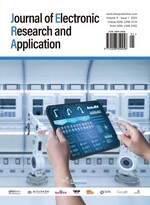Abstract
With the advancement of modern technology and the continuous development of science, research into flapping wing aircraft is becoming increasingly sophisticated. Addressing issues such as the large wingspan and heavy mass of existing bionic butterfly aircraft, this paper proposes the design of a lightweight lithium battery power supply, a chip integrated into a small circuit board, and a reference to the natural characteristics of butterfly wings. The wings are simulated using 0.125 mm polyethylene terephthalate (PET) film to replicate their movement. The driving structure employs a double motor and a four-bar mechanism to achieve natural and smooth wing vibrations. The control system features a lightweight motor, battery, and a high-performance low-power microcontroller for precise control. Using 3D printing technology, a lightweight design is realized, successfully simulating the structure and movement characteristics of a specific butterfly, demonstrating the principles of mechatronics. Furthermore, the design process incorporates multidisciplinary knowledge, and a workshop combining competitive discipline events with innovation and entrepreneurship has been established. This initiative fosters the deep integration of innovation and entrepreneurship education with professional training, effectively cultivating application-oriented technical talents.
References
Zhang Y, Li S, Wang X, et al., 2024, Butterfly Flying Mechanism and Summarized Research Progress in Imitation of Butterfly Flapping Wing Flight Vehicle [J]. Journal of Engineering Science, 46–48(9): 1582–1593. https://doi.org/10.13374/j.issn2095-9389.2023.10.11.002
Leng Y, Zhang W, Zhou S, et al., 2019, Bionic Butterfly Aircraft Design Analysis. Journal of Mechanical Design and Research, 35(4): 32–35 + 42.
Gao Y, Zhong S, Xiong Z, et al., 2019, Design and Analysis of Bionic Butterfly Robot. Mechanical and Electrical Engineering Technology, 53(08): 97–100 + 123.
Sun W, Feng C, 2016, Imitation Dragonfly Flapping Wing Flight Vehicle Design and Aerodynamic Research. Journal of Flight Mechanics, 2016(5): 21–25 + 29.
Hu Ye, Wang J, Zhang C, et al., 2010, The Influence of Butterfly Wing Surface Shape on the Flow Structure. Journal of Aerodynamics, 28(02): 138–142.
Wang L, 2018, Design and Aerodynamic Analysis of Bionic Ornithopter, thesis, Beijing Jiaotong University.
Lu Z, Tian G, Li R, et al., 2024, Single and Double Electric Machinery Transmission Direct Comparative Study on the Performance of the System. Journal of Automobile Engineering, 46–48(02): 310–319.
Xu B, Zhu W, 2017, Based on Four-Bar Linkage of Flapping Wing Drive Mechanism Design and Motion Simulation. Journal of Chongqing Institute of Technology (Natural Science), 12(5): 63–66.
Huang S, Shen G, Wei L, et al., 2010, Flow Display Experiment for Hovering Flight of Mechanical Butterfly Model. Experimental Fluid Mechanics, 24(02): 59–64.
Yao D, Shen G, Zhu B, et al., 2011, Experimental Study on Aerodynamic Dynamics of a Mechanical Dragonfly Hovering. Journal of Experimental Fluid Mechanics, 25(01): 69–75.
Li H, Wang H, Liu X, 2024, The Response Surface Method to Optimize the PLA Material Mechanical Properties of 3D Printing Specimens. Journal of Plastic Science and Technology, 52(10): 130–135.
Yang L, Meng J, Xue T, 2021, Effect of 3D Printing Process Parameters on Tensile Strength of PLA Specimen. Plastics Industry, 49(05): 73–77 + 142.
Yan H, Xu K, ZhuJia X, 2015, Based on the Four Rotor Aircraft MEGA328P Design. Value Engineering, 2015(29): 141–142.
Sun M, 2015, Aerodynamics of Insect Flight. Chinese Journal of Mechanical Mechanics, 47(02): 384.
Jin H, Meng L, Liu Z, et al., 2019, Innovation Curriculum Reform and Practice in the Context of Specialization Integration. Journal of Electrical and Electronic Teaching and Learning, 46(03): 208–210.
